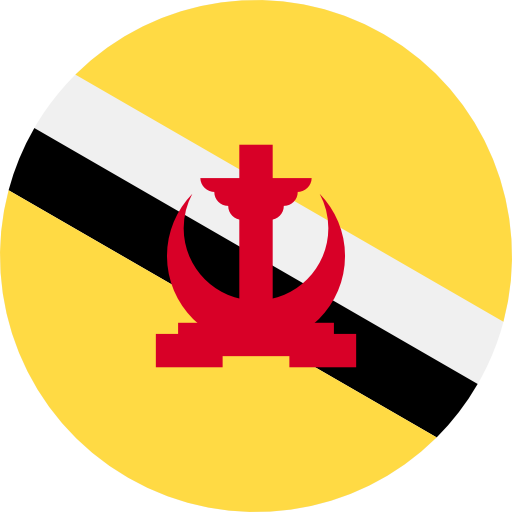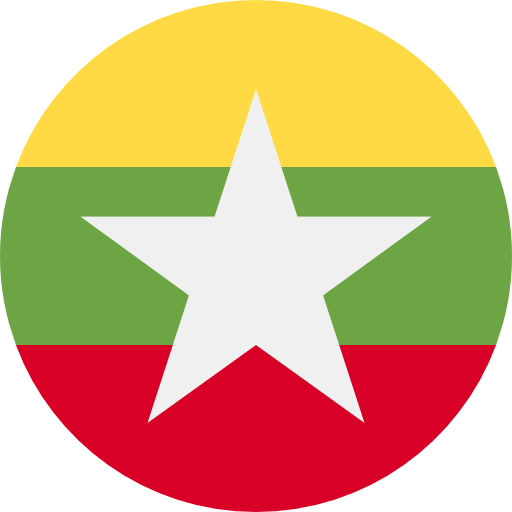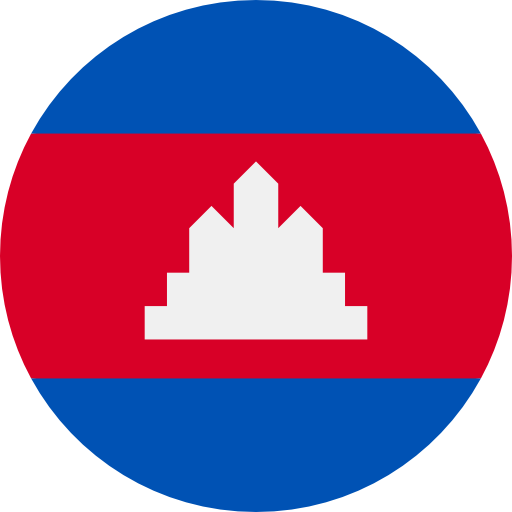Expert Singapore Registered Design
Protection to Protect Your Product's Appearance
Gain the exclusive legal right to stop others from making, using, importing or selling products with your aesthetic design in Singapore for up to 15 years. We will help you to protect what your product looks like, to enable you to use Singapore as your strategic hub to capture the ASEAN market.
Why Singapore is the Premier Hub for Your Registered Design
- World-Class IP Regime The Intellectual Property Office of Singapore (IPOS) is renowned for its speed, quality, and robust legal framework for protecting product aesthetics.
- Extremely Fast Registration Singapore offers one of the fastest design registration processes in the world. Eligible applications can be formally registered in as little as 2-3 months.
- Gateway to ASEAN A Registered Design in Singapore is a strong visual foundation for extending protection and enforcing your rights across Southeast Asia’s market of 650+ million people.
- Pro-Business Environment A strong legal system and focus on creative industries makes Singapore the ideal place to commercialize, license, and defend the design of your unique product from “knock-offs.”
Your End-to-End Design Protection Partner
Design Novelty Search
Design Novelty Search
Expert Visual Drafting
Expert Visual Drafting
We will file high-quality drawings, and/or photographs, and “Statement of Novelty” required by the IPOS to define and protect your design’s unique visual features.
Filing & Formality Prosecution
Filing & Formality Prosecution
Hague Agreement International Filing From Singapore
Hague Agreement International Filing From Singapore
Anti-Counterfeit Watch
Anti-Counterfeit Watch
Design Maintenance & Renewals
Design Maintenance & Renewals
From Sketch to Registered Design in 5 Simple Steps
Consultation & Novelty Search
We begin with a confidential review of your product's design and conduct a search for conflicting prior designs.
Application
Drafting
Our team prepares the formal representations (drawings or photos) and legal statements to best capture your design's novelty.
Application
Filing
We file the complete application with the IPOS, establishing your crucial priority date.
Formality Examination
Registration & Maintenance
Upon success (often in 2-3 months), your design is registered. We then manage the 5-year renewal cycle to keep it in force.
Consultation & Novelty Search
Application Drafting
Application Filing
Formality Examination
Registration & Maintenance
Overview of Southeast Asia Industrial Design
1. Legislations:
Registered Designs Act (Chapter 266)
2. Definition:
A Design refers to the features of shape, configuration, pattern or ornament applied to an article by an industrial process. It is the appearance of articles we see everyday. An article refers to any object to which the design is applied.
3. Criteria:
Registered Designs are used primarily to protect designs for industrial use. Designs can be two-dimensional or three-dimensional and can be applied to everyday items. To qualify for registration, a design must, in general, satisfy two key criteria: New: It has not been registered in Singapore and elsewhere; or published anywhere in the world before the date of application of the first filing. Thus the owner of a design should be careful not to disclose the design to anyone, until a design registration is filed.
Industrial Process: A Registered Design applied to an article must be capable of an industrial process i.e. more than 50 copies of the article have been or are intended to be produced for sale or hire.
Under the Registered Designs law in Singapore, the following cannot be registered:
– Designs that are contrary to the public policy or morality.
– Computer programs or layout-designs of integrated circuits.
– Designs applied to certain articles: Works of sculpture (other than casts used or intended for use as models or patterns to be multiplied by any industrial process); wall plaques, medals and medallions; and printed matter primarily of a literary or artistic character (including book jackets, calendars, certificates, coupons, dress-making patterns, greeting cards, labels, leaflets, maps, plans, playing cards, postcards, stamps, trade advertisements, trade forms and cards, transfers and similar articles).
– Any method or principle of construction.
– Designs that are solely functional.
– Designs that are dependent upon the appearance of another article, of which it is intended by the designer to form an integral part; or enable the article to be connected to, or placed in, around or against, another article so that either article may perform its function.
4. Rule of Priority:
The design registration system in Singapore operates on a first-to-file basis. In other words, the first person to file for application will, in general, have priority over others
Singapore is a member of the Paris Convention from 1995, whereby applications from convention countries will be subject to the same priority date in Singapore. The application for priority has to be made within six months of the first application in a convention country.
Singapore is also a member of the PCT since 1995. An applicant who has made an international patent application may file and/or prosecute the patent application during its national phase entry into Singapore within 30 months from the filing date of the international application or from the earliest priority date of the application if a priority is claimed.
5. Rule of Priority:
“First to File” is the rule followed by Singapore in determining priority of patents.
6. Duration and Renewal:
A Registered Design can last for an initial period of 5 years. Thereafter, the registration may be renewed every 5 years up to a maximum of 15 years, subject to the payment of renewal fees
1. Application
Every design application has to be filed with the Intellectual Property of Singapore.
2. Examination
A formalities examination will be conducted after the issuance of a filing date to ensure formalities as to the size, quality of the representation and classification are met.
3. Objections
If there are any amendments or deficiencies spotted in the formalities examination, the examiners will notify the applicant and the applicant would have to correct this non-compliance within a given period.
4. Registration
Once an application is in order, a registration certificate will be issued and the application will be published in the Designs Journal. Once published, the published designs are made available for public inspection. It takes about 2 to 3 months from the submission of the application to the successful registration of a design.
The following information and/or documents are required to file an application for an industrial design application in Singapore:-
1. Form D5
a) Full name, address and state of incorporation/nationality of the applicant;
b) Name of article and statement of novelty; and details of any priority claim i.e. at least the country and filing date;
c) International Design Classification. Serial number of the priority application;
d) Full name and address of the author; and e) Information on how the applicant has derived the right to the design from the author (normally by way of assignment, employment or other agreement)
2. Appointment of Agent Form (Form D2) signed by the applicant.
3. Six sets of representations of the design (drawings or photographs).
4. Priority documents and certified English translation (if necessary) of the priority document.
Application Fees
ITEMS | OFFICIAL FEES (USD) | PROFESSIONAL FEES (USD) |
|---|---|---|
1. Filing application to register one design excluding cost of preparing representations | 170 | 460 |
2. Reporting and responding to the Examiner’s report, filing of Statutory Declaration or arguments to overcome official objections, amendments, searches and other general works. | Varies | 420 – 1,250 |
3. Receiving, checking and forwarding Certificate of Registration, and application for first extension beyond first year | – | 210 |
4. Application for extension of period of registration
– for the first period of 5 years
– for the second period of 5 years
– for the third period of 5 years
– for the fourth period of 5 years |
200
300
370
460 |
420
420
500
500 |
5. Request for extension of time
(a) First and request
(b) Second request
(c) Third and subsequent request | – 20 40 65 | 340 |
*Out-of-pocket expenses and service bureau fees will be billed on your account as and when incurred.
*Official fees are subjected to review by the relevant authorities.
Basic Requirements
DOCUMENTS | REMARKS | TIME OF FILING |
|---|---|---|
Appointment of Agent (Form ID 2) | no legalization/ notarization requirements | On filing date |
Description of Design | to be translated to English | On filing date |
Drawings/Photographs | On filing date |
Additional Documents for Claiming Convention Priority
DOCUMENTS | REMARKS | TIME OF FILING |
|---|---|---|
Priority documents | to be translated to English language | 2 months from filing |

1. Legislations:
Registered Designs Act (Chapter 266)
2. Definition:
A Design refers to the features of shape, configuration, pattern or ornament applied to an article by an industrial process. It is the appearance of articles we see everyday. An article refers to any object to which the design is applied.
3. Criteria:
Registered Designs are used primarily to protect designs for industrial use. Designs can be two-dimensional or three-dimensional and can be applied to everyday items. To qualify for registration, a design must, in general, satisfy two key criteria: New: It has not been registered in Singapore and elsewhere; or published anywhere in the world before the date of application of the first filing. Thus the owner of a design should be careful not to disclose the design to anyone, until a design registration is filed.
Industrial Process: A Registered Design applied to an article must be capable of an industrial process i.e. more than 50 copies of the article have been or are intended to be produced for sale or hire.
Under the Registered Designs law in Singapore, the following cannot be registered:
– Designs that are contrary to the public policy or morality.
– Computer programs or layout-designs of integrated circuits.
– Designs applied to certain articles: Works of sculpture (other than casts used or intended for use as models or patterns to be multiplied by any industrial process); wall plaques, medals and medallions; and printed matter primarily of a literary or artistic character (including book jackets, calendars, certificates, coupons, dress-making patterns, greeting cards, labels, leaflets, maps, plans, playing cards, postcards, stamps, trade advertisements, trade forms and cards, transfers and similar articles).
– Any method or principle of construction.
– Designs that are solely functional.
– Designs that are dependent upon the appearance of another article, of which it is intended by the designer to form an integral part; or enable the article to be connected to, or placed in, around or against, another article so that either article may perform its function.
4. Rule of Priority:
The design registration system in Singapore operates on a first-to-file basis. In other words, the first person to file for application will, in general, have priority over others
Singapore is a member of the Paris Convention from 1995, whereby applications from convention countries will be subject to the same priority date in Singapore. The application for priority has to be made within six months of the first application in a convention country.
Singapore is also a member of the PCT since 1995. An applicant who has made an international patent application may file and/or prosecute the patent application during its national phase entry into Singapore within 30 months from the filing date of the international application or from the earliest priority date of the application if a priority is claimed.
5. Rule of Priority:
“First to File” is the rule followed by Singapore in determining priority of patents.
6. Duration and Renewal:
A Registered Design can last for an initial period of 5 years. Thereafter, the registration may be renewed every 5 years up to a maximum of 15 years, subject to the payment of renewal fees
1. Application
Every design application has to be filed with the Intellectual Property of Singapore.
2. Examination
A formalities examination will be conducted after the issuance of a filing date to ensure formalities as to the size, quality of the representation and classification are met.
3. Objections
If there are any amendments or deficiencies spotted in the formalities examination, the examiners will notify the applicant and the applicant would have to correct this non-compliance within a given period.
4. Registration
Once an application is in order, a registration certificate will be issued and the application will be published in the Designs Journal. Once published, the published designs are made available for public inspection. It takes about 2 to 3 months from the submission of the application to the successful registration of a design.
The following information and/or documents are required to file an application for an industrial design application in Singapore:-
1. Form D5
a) Full name, address and state of incorporation/nationality of the applicant;
b) Name of article and statement of novelty; and details of any priority claim i.e. at least the country and filing date;
c) International Design Classification. Serial number of the priority application;
d) Full name and address of the author; and e) Information on how the applicant has derived the right to the design from the author (normally by way of assignment, employment or other agreement)
2. Appointment of Agent Form (Form D2) signed by the applicant.
3. Six sets of representations of the design (drawings or photographs).
4. Priority documents and certified English translation (if necessary) of the priority document.
Application Fees
ITEMS | OFFICIAL FEES (USD) | PROFESSIONAL FEES (USD) |
|---|---|---|
1. Filing application to register one design excluding cost of preparing representations | 170 | 460 |
2. Reporting and responding to the Examiner’s report, filing of Statutory Declaration or arguments to overcome official objections, amendments, searches and other general works. | Varies | 420 – 1,250 |
3. Receiving, checking and forwarding Certificate of Registration, and application for first extension beyond first year | – | 210 |
4. Application for extension of period of registration
– for the first period of 5 years
– for the second period of 5 years
– for the third period of 5 years
– for the fourth period of 5 years |
200
300
370
460 |
420
420
500
500 |
5. Request for extension of time
(a) First and request
(b) Second request
(c) Third and subsequent request | – 20 40 65 | 340 |
*Out-of-pocket expenses and service bureau fees will be billed on your account as and when incurred.
*Official fees are subjected to review by the relevant authorities.
Basic Requirements
DOCUMENTS | REMARKS | TIME OF FILING |
|---|---|---|
Appointment of Agent (Form ID 2) | no legalization/ notarization requirements | On filing date |
Description of Design | to be translated to English | On filing date |
Drawings/Photographs | On filing date |
Additional Documents for Claiming Convention Priority
DOCUMENTS | REMARKS | TIME OF FILING |
|---|---|---|
Priority documents | to be translated to English language | 2 months from filing |

Have a new product design?
Don't disclose it.
Secure your "first-to-file" priority.
Success Stories
Smplrspace Pte Ltd
“We’re incredulous as it was faster than we expected.”
Invention Title: A System and Method for Generating a Digital Twin of a Building for Its Supervision
Application No.: 10202404049U
– Thibaut Tiberghien, Co Founder & CTO of Smplrspace Pte Ltd
Filed on Dec 2024 Granted on Apr 2025
“We’re incredulous as it was faster than we expected.”
A System and Method for Generating a Digital Twin of a Building for Its Supervision
Application No.: 10202404049U
– Thibaut Tiberghien, Co Founder & CTO of Smplrspace Pte Ltd
BOTOL Pte Ltd.
“We engaged PINTAS for patenting our BOTOL RVM and were pleased with their efficient guidance through a smooth process. Their valuable advice helped us secure our patent grant in just six months via Singapore’s Fast Track programme. We highly recommend PINTAS for reliable patent registration services.”
Invention Title: An Apparatus For Collecting Recyclables
Application No.: 10202300735P
– Max Craipeau, Director of BOTOL Pte Ltd.
Filed on 17th March 2023, Granted on 1st April 2024
Your Design Questions, Answered
What can be patented in Singapore?
To be patentable, an invention must be new (novel), involve an inventive step (be non-obvious), and be capable of industrial application. Discoveries, scientific theories, business methods, and methods of medical treatment, are generally not patentable. Our patent attorneys can advise on your specific invention’s eligibility.
How long does a Registered Design last in Singapore?
Patent vs. Industrial Design: What's the difference?
Can I file an international design application from Singapore?
Ready to Protect Your Most Valuable Asset?
Your product’s unique look is a key market differentiator. Don’t let competitors copy your design and steal your customers. Schedule a confidential, no-obligation consultation with a Singapore IP Attorney to discuss your design and map out your protection strategy.










